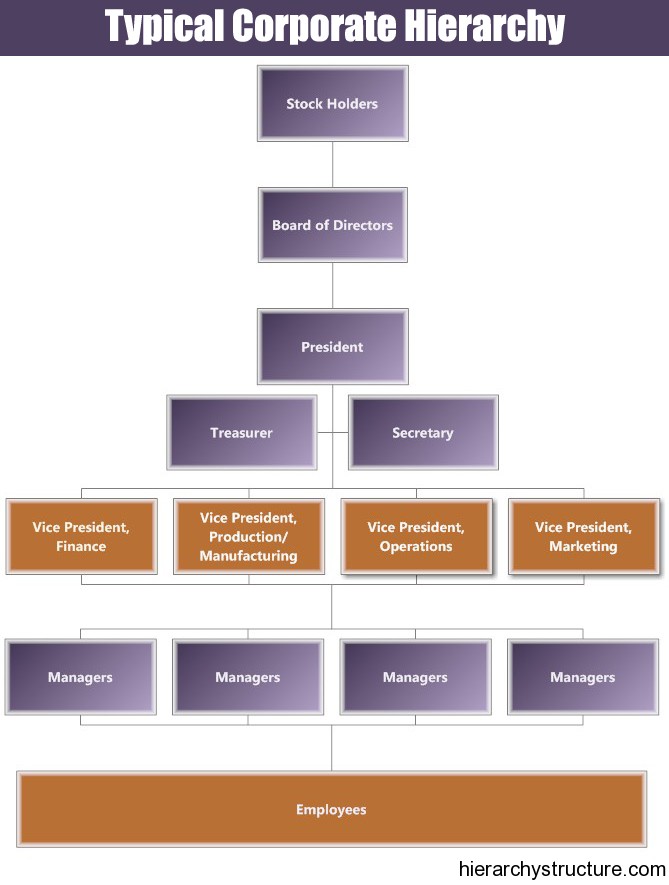Organizations are the grand strategies created to bring order to a concerted effort for the achievement of certain objectives and goals. Since these objectives cannot be achieved by an individual or a small group of people, there are in the notion of the organization the concept of hierarchy of authority. Since an individual cannot achieve the objectives of an organization, it is very necessary that many people be harnessed in the pursuit of an organization.
However, in order that their efforts become fruitful, they require to be tied up in a strong result oriented relationship. This is achieved by creating a hierarchical structure, which is known often as typical corporate hierarchy. The people in a structure work with the help of technology and in-line arrangement of staff.
The major purpose of dividing the corporate organization hierarchical arrangement is required for developing an organizational culture where superiors – subordinate relationships, collaboration, and teamwork among different subunits are quite strong and contribute actively towards organizational dynamism, development and professional growth of the employees.
The hierarchical arrangement is where each level in the hierarchy is looked after by its superior level, placed right above it in the hierarchy. This arrangement is intentionally developed so that employees can develop their capabilities with the help of their superiors, and they may be able to discover their potentialities, exploiting them to the fuller extent for their own and organizational development purposes.
The corporate hierarchy can be defined as a set of systematic and planned levels of ranks and responsibilities designed by an organization to provide its members with the opportunities to learn the necessary skills and to meet the current and future job demands.
Following are a few advantages of structuring the corporate organizations in the form of hierarchies:
- The corporate hierarchies help the upper level management to design effective work strategies by keeping in point the superior – subordinate relationship to improve the organization performance.
- With the efficient hierarchical arrangement, the strategic decision making pertaining to the issues that directly affect the articulation of organizational strategies and performance goals become easier and efficient.
- The hierarchical arrangement of corporate organizations helps in bringing forward the equal employment opportunities and promotes the prevention of discriminatory procedures, policies and practices. It happens, as every level is being supervised by another level placed above it, so the chances of taking biased decision become very few.
- The hierarchical structures help managers & line managers on appropriate interventions & strategic arrangement of employees to improve individual & group performance.
After analyzing all these advantages, it would not be wrong to say that typical corporate hierarchy works towards enhancing the effectiveness of an organization and well-being of its members through planned interventions of separate levels of professionals.
Generally speaking, a hierarchical organization is developed for a continuous purpose involving activities of repetitive nature and long-term operations to lead the organization towards growth & development. It is formally designed in terms of authority distributions, creating positions and linking various functions involved in order to carry out tasks in a well structured manner.

